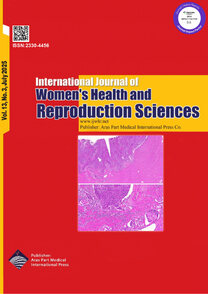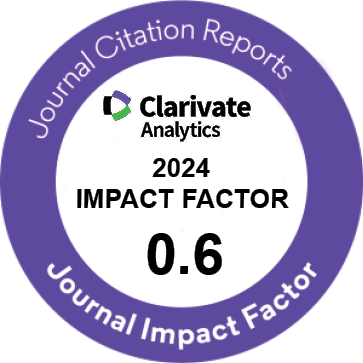| Original Article | |
| Association between Anti-Mullerian Hormone and Ovarian Response and Pregnancy in Polycystic Ovary Syndrome Patients | |
| Nayereh Ghomian1, Marzieh Lotfalizadeh1, Malihe Afat1, Farideh Golhasani Keshtan2 | |
| 1Department of Obstetrics and Gynecology, Neonatal and Maternal Research Center, Mashhad University of Medical Sciences, Mashhad, Iran 2Research Administrative Assistant, Mashhad University of Medical Sciences, Mashhad, Iran |
|
|
IJWHR 2019; 7: 049-053 DOI: 10.15296/ijwhr.2019.08 Viewed : 5779 times Downloaded : 6889 times. Keywords : Anti-Mullerian Hormone, Polycystic Ovary Syndrome, Ovulation Induction, Infertility, Letrozole |
|
| Full Text(PDF) | Related Articles | |
| Abstract | |
Objectives: Polycystic ovary syndrome (PCOS) is considered as one of the causes of infertility. Anti-Mullerian hormone (AMH) is 2-3 times higher in patients with the PCOS compared to others. The present study aimed to survey the association between basal AMH levels and ovarian response in infertile PCOS patients. Materials and Methods: In this cross-sectional study, 70 infertile PCOS women were enrolled referring to Milad Infertility Center (Mashhad, Iran) from May 2011 to April 2012. The basal blood level of AMH was evaluated. The patients received 5 mg of letrozole from the fifth cycle day (for 5 days) and then received 150 units of gonal F in the form of the recombinant follicle-stimulating hormone (FSH) on the ninth day of the cycle. Five thousand units of human chorionic gonadotropin (hCG) were prescribed for the patients who had one follicle of ≥ 18mm. Then, they should have had intercourse 36 hours later. After ovulation induction (OI) on the 10th cycle day, the second serum sample of AMH was taken. Results: Changes of AMH did not have a significant relationship with the ovarian response, namely, it was lower in patients with positive ovarian response compared to those without any ovarian response. In addition, the basal level of AMH in patients with a positive response (3.91 ± 2.14) had no significant difference with the secondary AMH (3.27 ± 2.39) after the OI (P = 0.19). Conclusions: Generally, the AMH was not a predictor of ovarian response in PCOS patients and the amount of AMH reduced after the treatment. This effect was maybe related to letrozole and gonadotropin. |
Cite By, Google Scholar
Google Scholar
PubMed
Online Submission System
 IJWHR ENDNOTE ® Style
IJWHR ENDNOTE ® Style
 Tutorials
Tutorials
 Publication Charge
Women's Reproductive Health Research Center
About Journal
Publication Charge
Women's Reproductive Health Research Center
About Journal
Aras Part Medical International Press Editor-in-Chief
Arash Khaki
Mertihan Kurdoglu Deputy Editor
Zafer Akan























